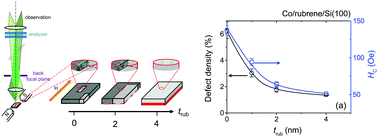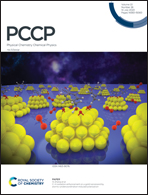Comparisons of magnetic defects and coercive forces for Co/Si(100) and Co/rubrene/Si(100)
Abstract
Spintronics can add new functionalities to electronic devices by utilizing the spin degree of freedom of electrons. Investigating magnetic defects is crucial for the performance of spintronics devices. However, the effects of magnetic defects that are introduced by the presence of organic materials on their magnetic properties remain unclear. Herein, we report on a novel method using rubrene combined with Kerr microscopy that enables quantitative and direct measurements of magnetic defect density. For Co/Si(100) at a magnetic field near the coercivity value, Kerr microscopy images show a dark image with some magnetic defects. Because of domain wall motion, small patches gradually change the contrast. These magnetic defects are immovable at different magnetic fields and serve as pinning sites for domain wall motion. Experimental evidence shows that coercive force can be reduced by controlling the magnetic defect density by introducing small amounts of rubrene into the films. Furthermore, direct quantitative measurements of magnetic defects show both a one-dimensional bowing of domain walls and strong defect–domain wall interactions in the films. Based on these findings, we propose a viable strategy for reducing the coercive force of Co/Si(100) by controlling the magnetic defect density and this new information promises to be valuable for future applications of spintronics devices.



 Please wait while we load your content...
Please wait while we load your content...